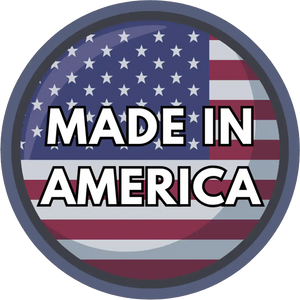Children learn best when their environment is designed with them in mind. That’s the heart of Montessori education—creating spaces where little ones can reach, explore, and choose for themselves.
One of the simplest yet most impactful pieces of furniture for this purpose is the Montessori bookshelf.
Unlike traditional bookshelves that tower over children or hide titles in vertical stacks, Montessori bookshelves display books at a child’s eye level, with covers facing outward.
This invites curiosity, nurtures independence, and helps foster a lifelong love of reading.
Among the many designs, a scalloped or cove-style Montessori bookshelf stands out. Its soft curves add warmth and character to a child’s room while maintaining the functional, open-access design that Montessori principles encourage.
If you’ve been thinking about building one yourself—or simply want to understand how these bookshelves come to life—this guide will walk you step-by-step through the process.
At Dannico Woodworks, we specialize in crafting durable, child-centered furniture that blends functionality with thoughtful design.
But we also know that many parents and DIY enthusiasts enjoy creating pieces of their own.
This guide combines professional woodworking expertise with the Montessori philosophy so you can create a piece that’s both safe and meaningful.
Materials and Tools You'll Need
To create your own Montessori bookshelf, you'll need the following materials and tools:
Materials
- Wood: Choose high-quality, child-safe wood such as birch or maple.
- Wood Glue: Essential for securing joints.
- Screws: Opt for screws that are appropriate for the thickness of your wood.
- Sandpaper: Use a variety of grits for smoothing edges and surfaces.
- Non-toxic Finish: A child-safe finish to protect the wood and enhance its appearance.
Tools
- Saw: A circular saw or jigsaw for cutting wood.
- Drill: For making holes and driving screws.
- Sander: An electric sander will make the job easier.
- Measuring Tape: For accurate measurements.
- Clamps: To hold pieces together while the glue dries.
 Step-by-Step Instructions
Step-by-Step Instructions
Step 1: Planning and Design
Start by sketching your bookshelf design. Consider the dimensions of the space where the bookshelf will be placed, and ensure the height is suitable for a child's reach. A typical Montessori bookshelf is between 24 to 36 inches high.
Step 2: Cutting the Wood
Using your saw, cut the wood according to your design. You'll need pieces for the sides, back, top, bottom, and shelves. If you're creating a scalloped or cove-style design, mark the curves on the wood before cutting.
Step 3: Assemble the Frame
Begin by assembling the frame of the bookshelf. Attach the sides to the top and bottom pieces using wood glue and screws. Ensure everything is square and use clamps to hold it together while the glue sets.
Step 4: Adding the Back
Attach the back panel to the frame. This adds stability to your bookshelf. Use glue and screws to secure it, ensuring it is flush with the sides and top.
Step 5: Installing the Shelves
Position the shelves at the desired heights, ensuring they are level. Secure them with screws from the outside of the bookshelf.
If you're including scalloped edges, sand the curves smoothly to prevent any sharp edges.
Step 6: Sanding the Edges
Sand all surfaces and edges thoroughly. Start with a coarse grit and work your way to a finer grit to achieve a smooth finish. Pay special attention to any curved or scalloped edges to ensure they are child-safe.
Step 7: Applying the Finish
Finally, apply a non-toxic finish to protect the wood and highlight its natural beauty. Use a brush or cloth to apply the finish evenly, following the grain of the wood. Allow it to dry completely before use.
Benefits of a Montessori Bookshelf
A Montessori bookshelf is more than just a piece of furniture; it’s a tool that fosters independence and a love for reading.
By allowing children to access their books freely, it encourages decision-making and responsibility. The open design also makes it easy for kids to keep their books organized.
Tips for Success
- Safety First: Always wear safety gear when using power tools.
- Take Your Time: Rushing can lead to mistakes. Take your time to ensure each step is done correctly.
- Involve Your Child: If appropriate, involve your child in the process. It can be a great learning experience for them.
FAQs
What age is a Montessori bookshelf suitable for?
A Montessori bookshelf is typically ideal for children as young as 1 year old, when they start exploring books independently.
Can I customize the size to fit a small space?
Yes. Just keep the principles of accessibility in mind: shelves should remain low and books front-facing.
How many books should I display at once?
Aim for 8–12 books. Too many options can overwhelm a child, while fewer choices keep them engaged.
Is plywood safe for kids’ furniture?
High-quality, formaldehyde-free plywood is safe. Always seal with a non-toxic finish for extra safety.
Should I anchor the bookshelf to the wall?
If the design is tall or in a high-traffic area, anchoring is recommended to prevent tipping.
Conclusion
Building a scalloped or cove-style Montessori bookshelf isn’t just about woodworking—it’s about creating an environment where children feel empowered to explore.
With the right design, materials, and care, this simple piece of furniture can inspire years of independent learning and joyful reading.
At Dannico Woodworks, we’re passionate about crafting pieces that bring both beauty and function to children’s spaces.
Whether you choose to build your own or explore our handcrafted collections, the goal is the same: to give your child a space that encourages curiosity, independence, and growth.
So, what story will your child discover first from their very own bookshelf?

